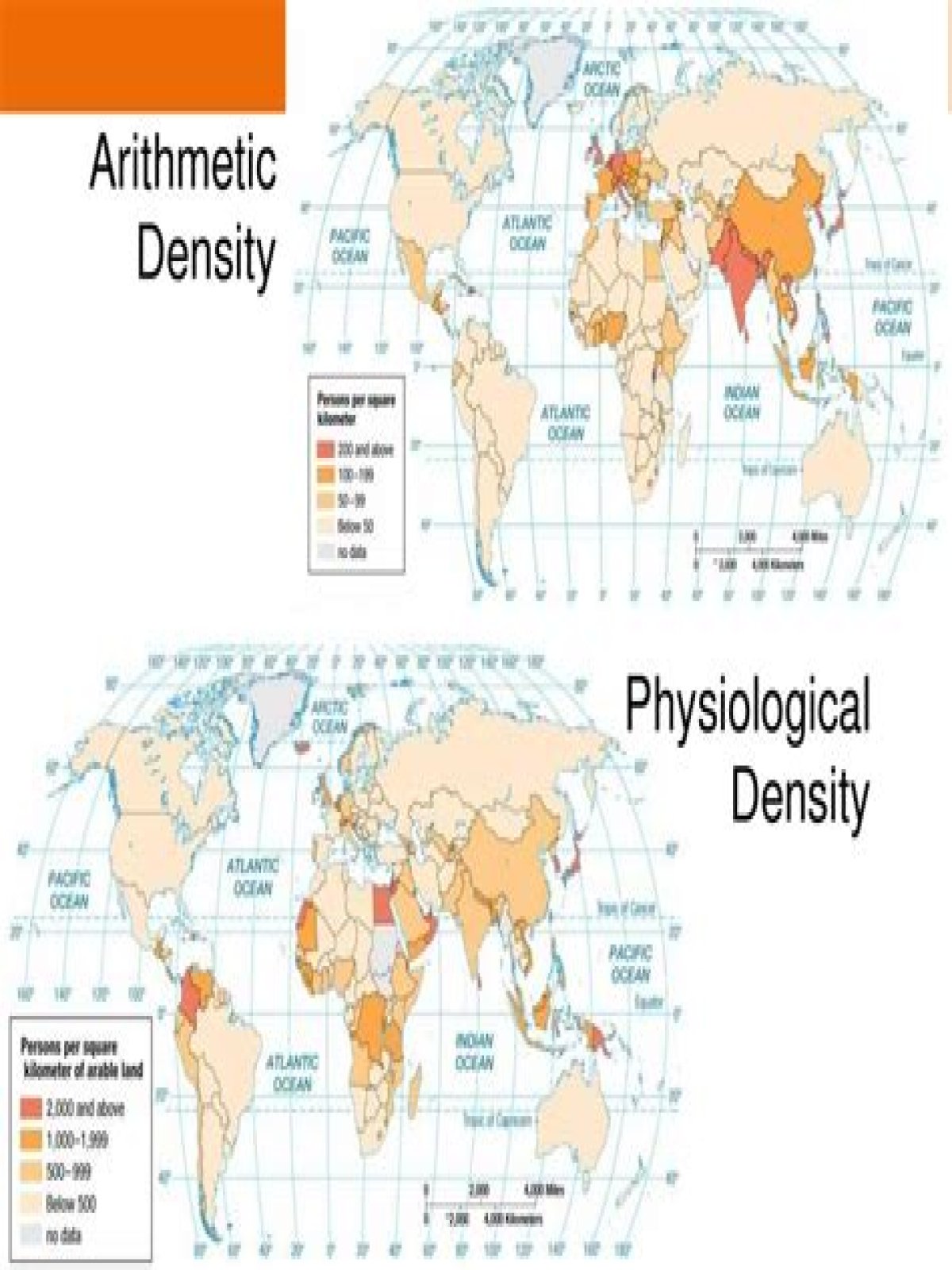Why is physiological density more accurate?
Why is physiological density more accurate? The physiological density of a population is the total population in proportion to the area of arable land. Physiologic population density is more accurate because it shows arable’ livable land and it’s more realistic.
- Why is physiological density the best?
- Why is physiological population density is viewed as a superior measure of population density?
- Why is physiological density better than arithmetic?
- What does a country have if the physiological density is very high and its arithmetic density is very low?
- What is the difference between physiological density and arithmetic population density?
- What would an increase in a country’s agricultural density increase or decrease?
- Which country likely has a higher physiological population density Egypt or France Why?
- How does population density affect the overall health of the population?
- Which of the following best explains why a country with high physiological density?
- Does a high population necessarily lead to a high physiologic population density?
- What is physiological density quizlet?
- What is the difference between physiological density and agricultural density class 12?
Why is physiological density the best?
The physiological density of the area helps us better understand how many people are relying on a certain area of land. We are better able to understand how much food is being produced in the area and just how many people it really needs to feed.
Why is physiological population density is viewed as a superior measure of population density?
Physiological population density is viewed as a superior measure of population density for which of the following reasons? It best reflects the percentage of a country’s population that is urbanized. It is more reflective of the world’s largest population concentrations.
hello! agricultural-density isThe population density measured as the number of farmers per unit area of arable land. physiological is total population divided by arable land.
Why is physiological density better than arithmetic?
The physiological density of a population is the total population in proportion to the area of arable land. Therefore, the arithmetic density of a population is always lower than the physiological density, since a land’s arable portion can only be a subset of it’s full size.
The physiological density or real population density is the number of people per unit area of arable land. A higher physiological density suggests that the available agricultural land is being used by more and may reach its output limit sooner than a country that has a lower physiological density.
What does a country have if the physiological density is very high and its arithmetic density is very low?
low agricultural density. 23) If the physiological density in a given country is very high and its arithmetic density is very low, then a country has a small percentage of land suitable for agriculture, even if there seems to be plenty of space available to live in.
What is the difference between physiological density and arithmetic population density?
Arithmetic density, also known as real density, is very simply the total number of people divided by the total land area. Physiological density is the number of people per unit area of arable land.
We know that the higher the physiological density is, the more pressure people put on the land to produce enough food to survive. It also suggests that the available agricultural land is being used by more people, and it may reach its output limit sooner than a country that has a lower physiological density.
What would an increase in a country’s agricultural density increase or decrease?
number of people per area of land. decrease in the amount of agricultural land. An increase in a country’s agricultural density would suggest a(n) low agricultural density.
Which country likely has a higher physiological population density Egypt or France Why?
Which country likely has a higher physiological population density, Egypt or France? Why? Egypt. Compared to France, Egypt has relatively little farm land (Arable Land) since much of the country is desert (Arid Land).
How does population density affect the overall health of the population?
Living in neighbourhoods with high population density may damage health. Although the health-enhancing impact of more active transport among those living in more densely populated neighbourhoods compensated part of this effect, overall, higher density remained associated with a higher risk of mortality.
The physiological density or real population density is the number of people per unit area of arable land. A higher physiological density suggests that the available agricultural land is being used by more and may reach its output limit sooner than a country that has a lower physiological density.
Which of the following best explains why a country with high physiological density?
Which of the following explains why a country with a high physiological density (e.g., Japan, Egypt, or the Netherlands) risks exceeding its carrying capacity? The population places a large amount of pressure on the arable land to produce enough food without risking severe environmental degradation.
Does a high population necessarily lead to a high physiologic population density?
A high population may not mean a high physiologic density (country could have lots of farmland) A small area of cultivated land means a high physiologic density IF population is high.
What is physiological density quizlet?
Physiological Density. The number of people per unit of area of arable land, which is land suitable for agriculture. Example: The US’ physiological density is 445 per square mile.
Some country’s that have high Physiological Density include Egypt, Japan and The Netherlands. These countries are either very small with high populations or they do not have very much arable land. Some countries with low physiological density include America, Canada and Russia.
What is the difference between physiological density and agricultural density class 12?
Physiological density is the number of people per unit of arable land. Agricultural density is the number of farmers per unit of arable land.
